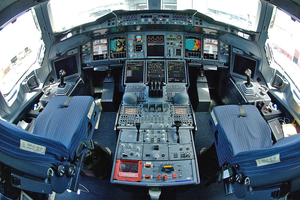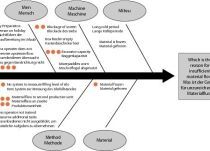Fatal errors – What entrepreneurs can learn from pilots
Organizations have to contend with diverse sources of error, any of which may have catastrophic impacts under an adverse st of conditions. If such errors are to be recognized and their causes eliminated, a rational, analytical error analysis is indispensable. In most organizations, though, errors are not always dealt with openly, for that requires a culture of error acceptance. A quick peek into the cockpit of a commercial aircraft suffices to show that, for years now, airline pilots have been adhering to a concept that offers a lot to learn for other organizations.
Learning from mistakes
In a survey of more than 300 European managers conducted by ESMT Berlin, almost all participants stated that mistakes were something quite normal for them and that they easily addressed the mistakes of others in the company, even if they were made by superiors. However, despite their alleged normality, 88% of respondents addressed the mistakes exclusively in private. Interestingly, however, only 54% thought that their mistakes would be pointed out to them in private. Nineteen percent thought that their mistakes would be mentioned without exception before a circle of employees and colleagues. We suspect that the respondents reacted to the open discussion of their own mistakes with the usual embarrassment and that this feeling has become engrained in their minds, much more so than the discussion about the mistakes of others.
What is even more interesting, however, is that the “open” discussion of mistakes was equated with conversations in private, although it is hard to imagine an even smaller closed circle as a framework for discussion. But why do superiors and employees seek the confidential discussion? Because we have regarded mistakes since childhood as something shameful and therefore do not want to make them public.
From the point of view of the organization, this attitude has the serious disadvantage that it is not possible to learn from mistakes in this way. Amy Edmondson of Harvard Business School has shown in her research that employees are only willing to openly confess to negative events or developments if they can be sure that neither they nor their colleagues will be punished. She cites a corporate culture that offers psychological safety as a prerequisite for this. I call this a basic prerequisite, but it is not enough to establish a culture in which mistakes are considered to be fundamentally different – i.e. as a natural occurrence – for which no one needs to be ashamed.
As long as this is not the case, there will always be reasons why employees, even with psychological safety, prefer to remain silent instead of admitting or reporting a mistake.
In pronounced hierarchies, we can observe that employees do not keep silent out of fear of higher authority, but also out of insecurity. The high hierarchical position is often associated with both instructional and professional competence. It is therefore conceivable that employees discover a mistake made by their superior without knowing exactly whether it is actually a mistake or not perhaps something that should be. And that they wrongly do not ask because they are afraid of embarrassing themselves.
Aeronautics as a model
In aviation, the US Federal Aviation Administration (FAA) and the National Transportation Safety Board (NTSB) began analysing the influence of human error in accidents in the late 1970s after several spectacular accidents. These investigations not only showed that crew mistakes were the cause of more than two thirds of all accidents. They also showed that in more than 80% of all air accidents the captain was the flying pilot. This finding was a shock. The captain was – and is – the more experienced pilot in the cockpit. As it turned out, however, the crux was by no means a higher or lower level of knowledge, but rather was related to the hierarchical gap between the captain and the other crew members in the cockpit: The flight captains had always corrected the mistakes or wrong decisions of their co-pilots without further ado; conversely, it had been much more difficult, if not impossible.
One could conclude from this that the hierarchy in the cockpit would then have to be abolished. However, this is not the alternative for aviation or any other complex organization. Extensive, coordinated processes, as is the norm in large corporations, would not be feasible without clear divisions of labour, responsibilities and hierarchies.
In aviation, the findings of the FAA, NASA and NTSB led to a concept that enabled cooperation and information exchange in the cockpit regardless of hierarchical position. Crew Resource Management (CRM) was developed in the early 1980s under the leadership of the above-mentioned authorities, several universities, numerous airlines and the US Air Force. It was and still is intended to teach aircraft crews not only flying skills but also soft skills such as communication and modern management methods. As was to be expected, the captains in particular were initially anything but enthusiastic; they saw CRM as a threat to their authority and decision-making power, behavioural training as an assault and its content as “psychobabble”. It took almost a decade before they accepted CRM and recognized the advantages of open communication in the cockpit as facilitating their work. The successful application of CRM also contributed to this: Within twenty years, the number of air incidents due to human error in the USA had fallen from over 70 to under 30%.
Open communication
At this point, the question naturally arises as to whether and to what extent CRM can be integrated into the day-to-day running of the company. After all, aviation is a high-risk sector where all those involved know how devastating the consequences of mistakes can be. In contrast, managers do not come to work every day knowing that they are responsible for the physical safety of hundreds. However, they are responsible, among other things, for their business processes, the success of their department, the job security of their employees, as well as for the reputation and value of their company, see Volkswagen. Consequently, they too should keep their mistakes and error rates low.
Open communication about mistakes is therefore relevant for every organization, as this is the only way to learn from them. Many companies have already taken the first steps in this direction with their quality management programmes. Nevertheless, there is a central difference between these conventional approaches to avoid errors and the modern error management practiced in aviation: In everyday business life, errors are still seen and stigmatized as weaknesses, whereas in modern error management they are an unavoidable fact of human behaviour. Although the followers of both methods try to avoid mistakes, quality management puts them in a negative light and associates them with shame and fear of sanctions. In modern error management, on the other hand, transparency is in the foreground, in addition to an objective attitude towards errors. Ideally, errors are identified, corrected, analysed and their causes eliminated so that they do not repeat themselves.
Modern mistake culture
So how can the modern, open error culture be implemented in companies? The aviation industry has paved the way and shown that it is possible. However, some basic conditions must be met:
The inner attitude, which says that mistakes are part of human action and cannot be avoided even with the greatest care. This applies to all areas and persons, including the management level. More important than futile attempts never to make a mistake are timely correction and the ability to deal with mistakes constructively
Freedom from sanctions: Mistakes must not be sanctioned. Fear of losing face and punishment lead to mistakes being covered up
Walk the talk: The open, sanction-free principle must be exemplified top-down. Only in this way will colleagues and employees report their own mistakes and those of others both horizontally and vertically, without having the feeling that they are denouncing someone or talking their heads off
Communication: Error communication is based on facts and takes place in an objective manner
Cross or reality check: Situations can be perceived and assessed differently. Just as captain and co-pilot compare the readings of their instruments and – even more importantly – their interpretations of these readings, managers, no matter at what level, should have their data and the conclusions derived from them checked by colleagues and employees
Reflection: In order to learn from mistakes, the causes of errors must be sought and analysed. In aviation, this analysis takes place in the context of regular debriefings, which are conducted by the crews at the end of each joint flight day. Similarly, regular debriefing dates must be set in companies/teams
Training: Experience in aviation shows that the implementation of the CRM concept does not succeed overnight. Radical change concepts are of no use here; pre-rehearsed persuasion coupled with regular – i.e. at least once a year – one-day training on error management principles are more suitable
Reporting: In order to reduce sources of error, it is recommended that error cases be recorded in a collection and made available to everyone in the company
The thing everyone has to learn is to announce errors calmly and openly. With time, it will be easier for everyone, especially once the criteria of modern error management have been internalized and everyone has understood that it is never about showing someone else how wrong they are and how right you are. Then it will be possible, even in a large group like Volkswagen, to inform the Board of Management about an illegal engine adjustment. It would give it the security of knowing all the critical information – whether it likes it or not.
ESMT Berlin
https://faculty-research.esmt.berlin/person/jan-u-hagen
International Journal of Aviation Psychology 9 (1), pp. 19-32
Journal of Management Studies, 40 (6), pp. 1453-1476
NTSB SS-94/01. Washington, DC: NTSB
Human Factors 41 (1), pp. 161-172










